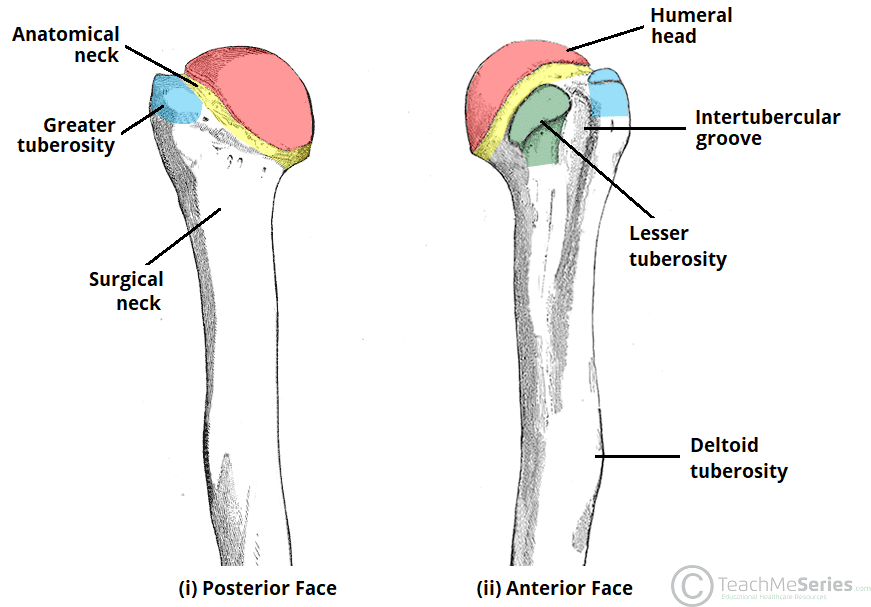Introduction
Humeral shaft fractures are common injuries. Like many orthopaedic injuries, they have a bimodal distribution, occurring in both younger patients due to high energy trauma and in elderly patients following low impact injuries.
Due to the location of the radial nerve within the spiral groove, there is a reasonably high risk of injury; the overall incidence is around 10%, although this is much higher (~25%) in Holstein-Lewis fractures (as discussed below).
The risk factors for humeral shaft fractures include osteoporosis, increasing age, or previous fractures. Humeral shaft fractures can also occur as pathological fractures.
Clinical Features
Pain and deformity are the predominant features of this injury. These fractures may occur from a fall directly onto the outstretched limb or falling laterally onto an adducted limb.
If the radial nerve is involved, the patient may also complain of reduced sensation over the dorsal 1st webspace and weakness in wrist extension.
On examination, ensure you carefully check and document the neurovascular status. Assess for open wounds and any suspected concurrent injuries or fractures, particularly if there was a high-energy impact involved.
Holstein-Lewis Fracture
A Holstein-Lewis fracture is a fracture of the distal third of the humerus resulting in the entrapment of the radial nerve.
The resultant neuropraxia to the radial nerve will result in loss of sensation in the radial distribution and a wrist drop deformity. Urgent surgical management is indicated.
Investigations
Anteroposterior (AP) and lateral plain film radiographs of the humerus are usually that is all that is required (Fig. 2). The elbow and shoulder should be visible.
In severely comminuted cases, CT imaging may be requested for pre-operatively planning, although this is not routinely done.

Figure 2 – Plain film AP radiographs showing (A) proximal humeral shaft spiral fracture (B) midshaft humeral fracture (C) distal humeral shaft spiral fracture (a Holstein-Lewis fracture)
Management
The mainstay of management is the re-alignment of the limb and the majority of humeral shaft fractures can be treated conservatively in a functional humeral brace (or U-slab if these are not available)*.
Specifically, fractures that are <20o anterior angulation, <30o varus or valgus angulation, and with <3cm of shortening are typically deemed suitable for conservative management. These patients need regular follow-up with repeated plain film imaging and around 90% of patients will go on to full union within 8-12 weeks.
*For very distal fractures, a humeral brace will act as a fulcrum and may exaggerate the deformity, therefore a high above-elbow cast should be applied
Surgical Management
Surgical fixation is needed in a minority of patients and will typically involve open reduction and internal fixation (ORIF) with a plate. This permits return to work slightly quicker than conservative management.
Intramedullary nailing may be indicated in the presence of pathological fractures, polytrauma, or severely osteoporotic bones.
Complications
In most cases, prognosis is good, with minimal impact on function once the fracture has healed. Non-union and mal-union are important, albeit fortunately rare, complications to consider in humeral shaft fractures.
Varus angulation is slightly more common with transverse fractures, however rarely causes functional limitations, as the shoulder has such a vast range of motion that most deformities in the humerus can be accommodated for.
Around 90% of radial nerve injuries will improve within 3 months without any intervention.
Key Points
- The majority of humeral shaft fractures affect the middle third of the humerus
- They can be diagnosed on plain film radiographs, with lateral and antero-posterior views
- Most cases can be treated conservatively
- Damage to the radial nerve should be assessed for in all cases

